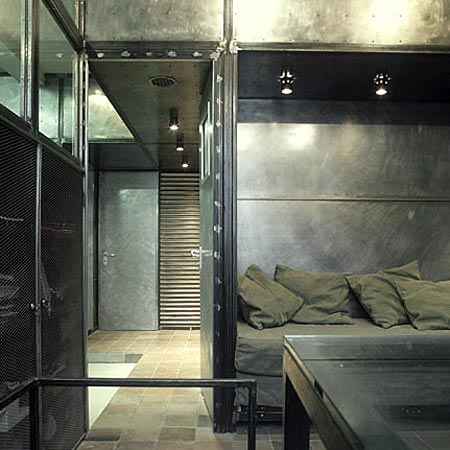Russian architect Peter Kostelov has refurbished an apartment in Moscow using industrial materials.
The project involved dividing a studio apartment to create separate spaces.
Kostelov used metal throughout the interior, with visible welding and a raw aesthetic.
Photographs are by Zinon Razutdinov.
Here's some more information from Peter Kostelov
--
Apartment
Earlier it used to be a studio apartment; practically it was a one bedroom apartment. After reconstruction there came out a few more separate rooms: a spacious living room, a bedroom, study room, library, two wardrobe rooms, a kitchen, a bathroom and a lavatory and shower for guests.
All these were placed around the space of 86 sq. m. As a result a bedroom and a kitchen became far smaller, hence the living room bigger, therefore the space left worked well for a wardrobe room, adjusting to a bedroom as well as for many other places. Besides the ceiling was lowed giving space for an entrance to store house hold things.
The open space with a column in the center was filled with a frame made of steel tubes. The frame hasn’t been trimmed with any decorative materials except of metal cover, which can be easily replaced by wood, stone, paper wall, cart or whatever. The conception goes first and stays the same.
How the idea of a module works. 2,8 m ceiling conventionally divided by 4 is 0,7 m. pace which can be accepted as a module for a spatial interior design. For instance: 0,7 m times 3 are 2,1m, it’s the height of the doors and entrance location; double 0,7 m is the height of display cabinet unit in the living room, 0,7m times 4 is for bookshelves.
The principle of a module works and is traced all around the apartment. For me it was a matter of an utmost desire to create an indivisible architectural design. Practically it is deprived of any decorative elements. The most essential of it is the functional purpose of a design together with the principle of unities of all the elements of the space.

